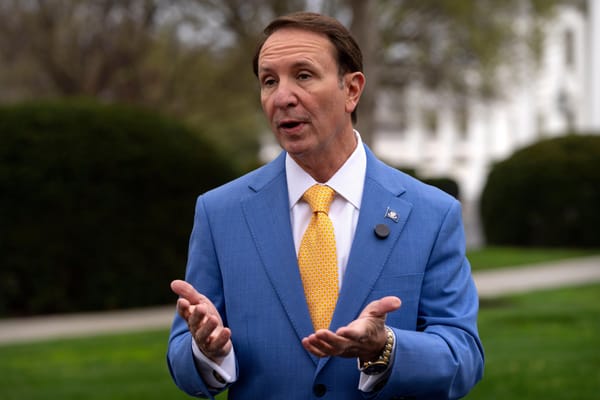12 Days: Middle Mile Investments and the Push for Internet Exchange Points
NTIA’s Enabling Middle Mile Program will facilitate the installation of over 12,000 miles of fiber-optic cable.
Jericho Casper

December 30, 2023 – In 2023, the National Telecommunications and Information Administration’s awarded nearly all of the $1 billion available for the projects under the Enabling Middle Mile Program by mid-July. The last batch of awards were announced in September, and included four additional $50 million grants.
In addition to the federal funds awarded an additional $848 million in funding for projects is being put forward by reward recipients. That’s the equivalent of 47 percent of the total project cost, or a more than 93 percent “match” of the federal project funds.
The 12 Days of Broadband 2023 (click to open)
- On the First Day of Broadband, my true love sent to me:
One Artificial General Intelligence - On the Second Day of Broadband, my true love sent to me:
24 Reverse-Preemption Pole Attachment States (2023 edition) - On the Third Day of Broadband, my true love sent to me:
$3.6 Billion Funds Remaining in the Affordable Connectivity Program - On the Fourth Day of Broadband, my true love sent to me:
4.8 Million Challenges to Broadband Coverage Data - On the Fifth Day of Broadband, my true love sent to me:
56 States and Territorial Broadband Offices Implementing BEAD - On the Sixth Day of Broadband, my true love sent to me:
One-hundred-and 66 Billion Dollars of American Semiconductor Investment - On the Seventh Day of Broadband, my true love sent to me:
7 Layers to the Open Systems Interconnection Model and Open Access Networks - On the Eighth Day of Broadband, my true love sent to me:
The Number 8 As a Representation of Balance, Justice and Fairness - On the Ninth Day of Broadband, my true love sent to me:
93 Percent Match of Federal Funds for Enabling Middle Mile Broadband Program - On the Tenth Day of Broadband, my true love sent to me:
Nearly 10 Months Without FCC Spectrum Auction Authority - On the Eleventh Day of Broadband, my true love sent to me:
More Than 11 Years in Lawsuits Over Net Neutrality - On the Twelfth Day of Broadband, my true love sent to me:
12 Year Olds (and Older) Having to Age-Verify on Social Media
That brings the total to $1.8 billion that has been allocated for middle-mile investments. These investments will facilitate the installation of over 12,000 miles of fiber-optic cable, to be laid within 1,000 feet of 6,961 community anchor institutions.
Over 40 states and territories are embarking on ambitious plans to address deficiencies in middle-mile infrastructure, backed in part by the NTIA’s Enabling Middle Mile program, but also by the Broadband, Equity, Access, and Deployment Program. These initiatives aim to improve connectivity and bolster the national internet framework.
Notably, companies like Zayo will utilize $90 million in middle mile funding to establish new routes connecting major cities like Dallas, Atlanta, El Paso, and regions between Oregon and Nevada through Northern California. The NTIA’s Middle Mile program enables companies to establish middle mile connections in areas where the return on investment is usually lacking.
Rising awareness about role of carrier-neutral Internet Exchange Points
This year marked a notable rise in recognizing the vital roles played by not only middle-mile infrastructure, but also carrier-neutral Internet Exchange Points in overcoming challenges for affordable rural broadband.
The NTIA’s program did not fund any carrier-neutral internet exchange points projects when it announced awards, despite receiving several IXP applications.
In 2023, a significant gap remains in the infrastructure for carrier-neutral IXPs across the United States. Fourteen states and three territories have yet to establish these critical points, hindering efficient data transfer.
Experts urged states to set aside a percentage of their BEAD allocations for building internet exchange points in their state at Mountain Connect in August.
Kansas is one state which appears to have taken that advice. The Sunflower State recently granted $5 million to Connected Nation to build the state’s first carrier-neutral IXP. In conjunction, Kansas will utilize a $42 million award from the NTIA’s Middle Mile program to create a 682-mile open-access middle-mile fiber optic network, that will connect to the IXP in Wichita. The IXP stands to reduce IP transit pricing to below 10 cents per megabit, an expected 90% reduction in cost as compared to current transport and transit pricing through Kansas City, Missouri.
As states strive to close the connectivity gap and propel their digital ecosystems forward, the critical need for robust middle-mile infrastructure and Internet Exchange Points remains at the forefront of the national agenda.
Will $1 Billion in NTIA funding be enough?
Industry leaders disagreed on whether $1 billion for NTIA’s Middle Mile program would be enough to deploy all the necessary infrastructure to connect Americans, speaking at a Broadband Breakfast for Lunch event at Connect X in May.
Having received more than 260 applications requesting $7.47 billion in funding from the Middle Mile program, the NTIA might require additional funding in the future to build out middle-mile projects and carrier-neutral IXPs necessary to close the digital divide.
And, while attention is naturally focused on the $42.5 billion in BEAD funding, that federally-funded broadband infrastructure could be less effective without more internet exchange points, experts highlighted at Broadband Breakfast’s Digital Infrastructure Investment Summit on December 5.
While emphasizing “last mile” builds, or connections to individual homes and businesses, BEAD connections are only part of the puzzle, said Tom Cox, vice president of state and government affairs at Connected Nation, a nonprofit that works with states to expand broadband access.
“If you don’t figure out a way to solve the transport issue, and if you don’t figure out a way to solve the latency issue, a lot of this BEAD money is going to be kind of all for naught,” said Cox.












Member discussion